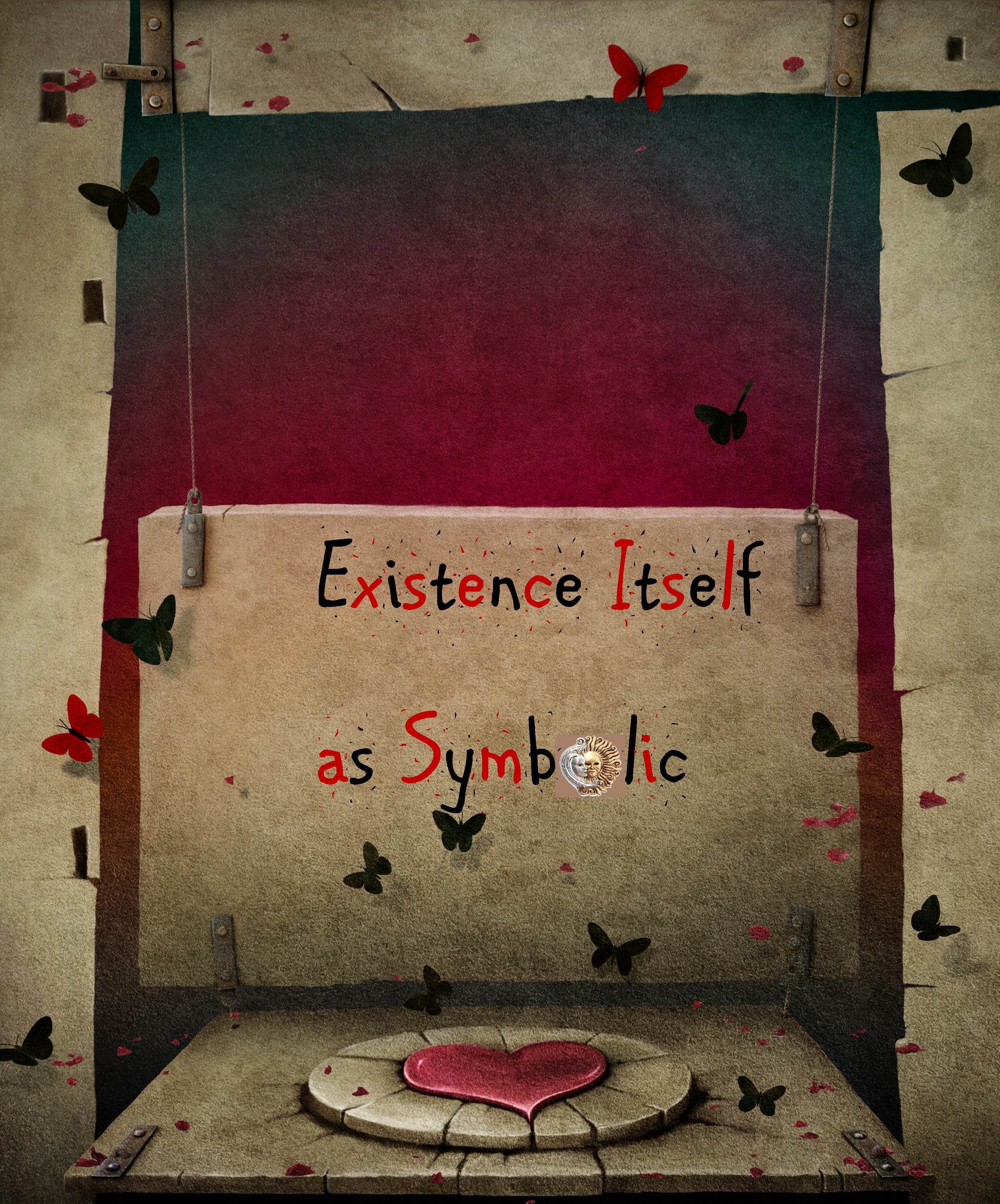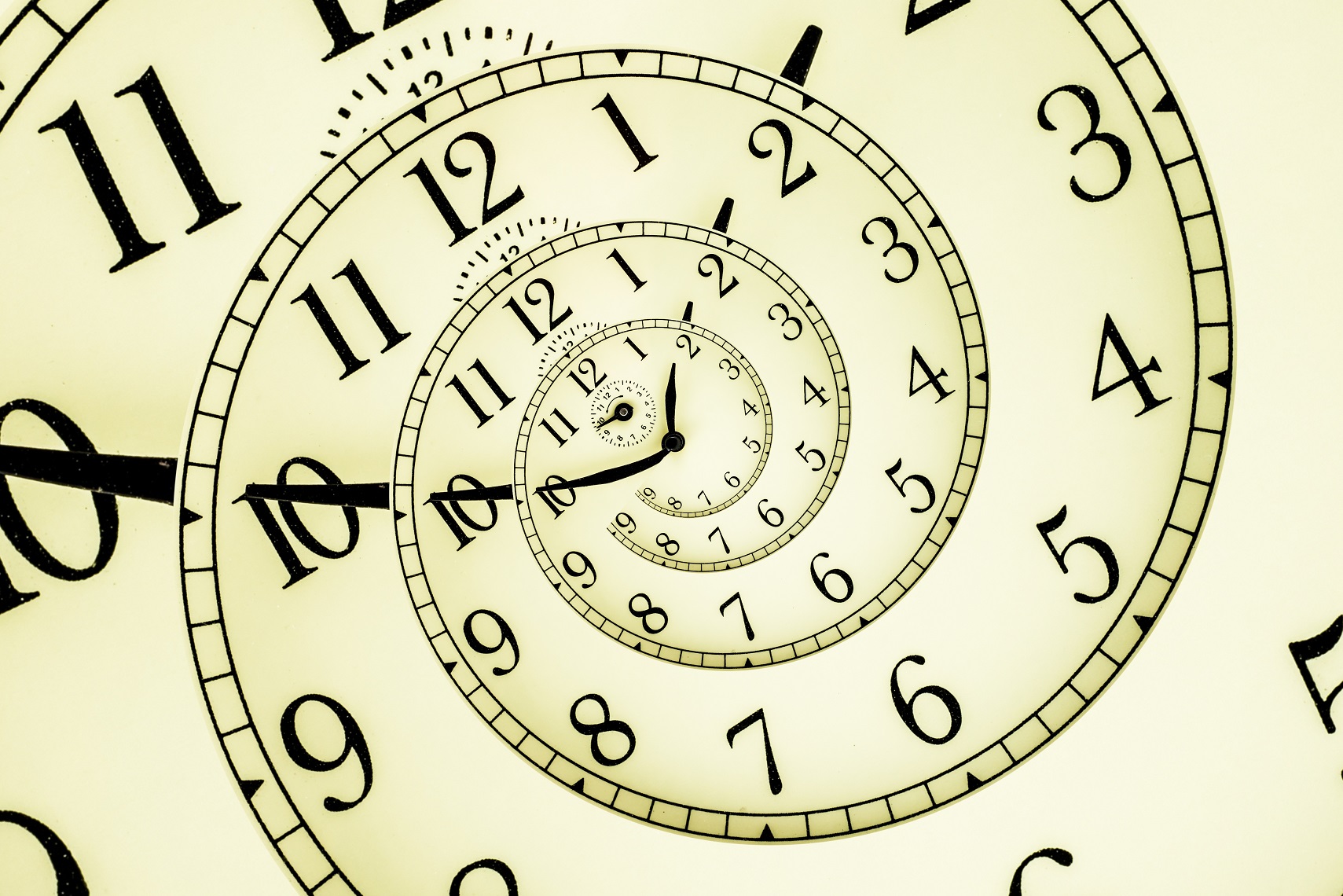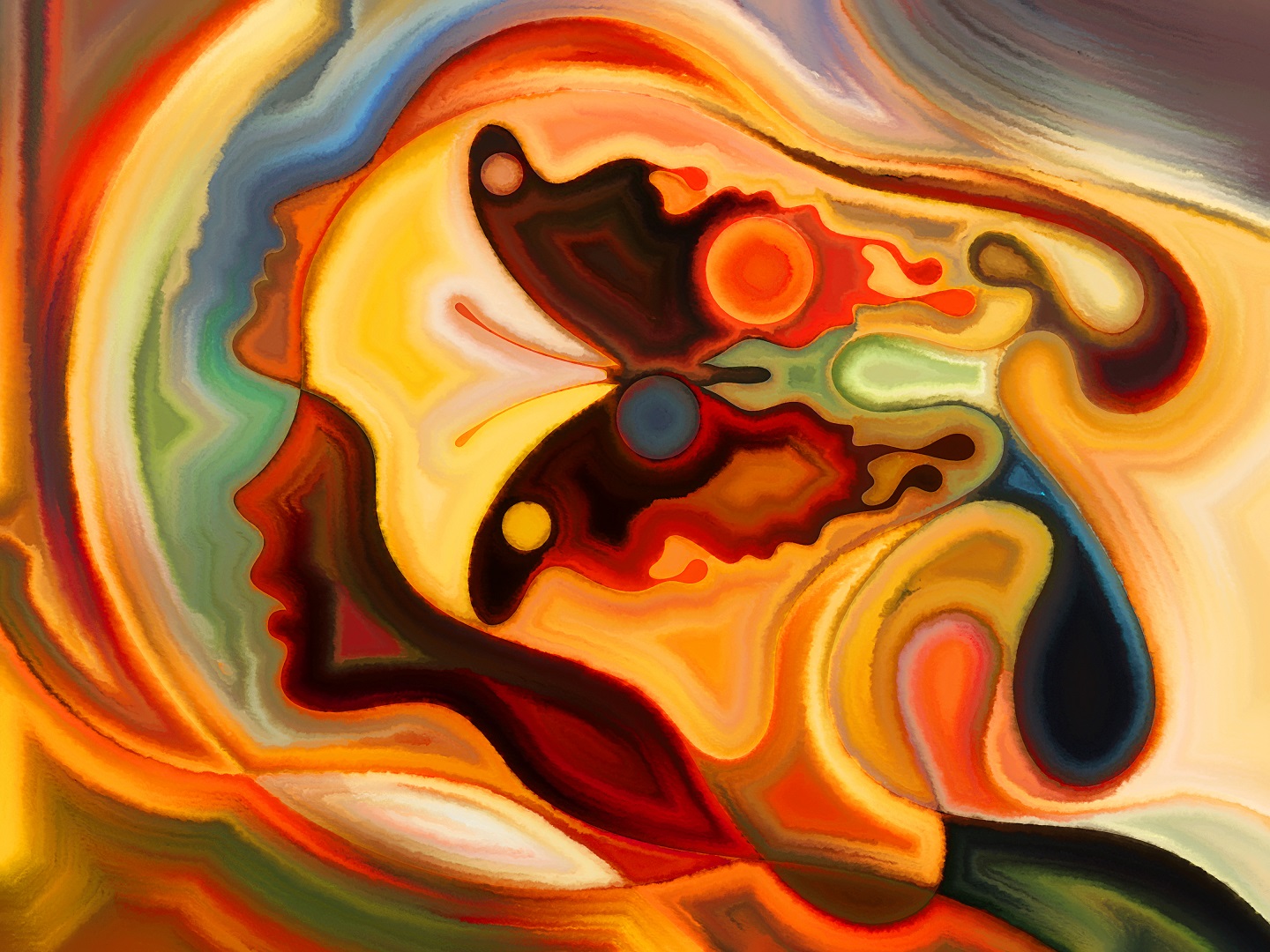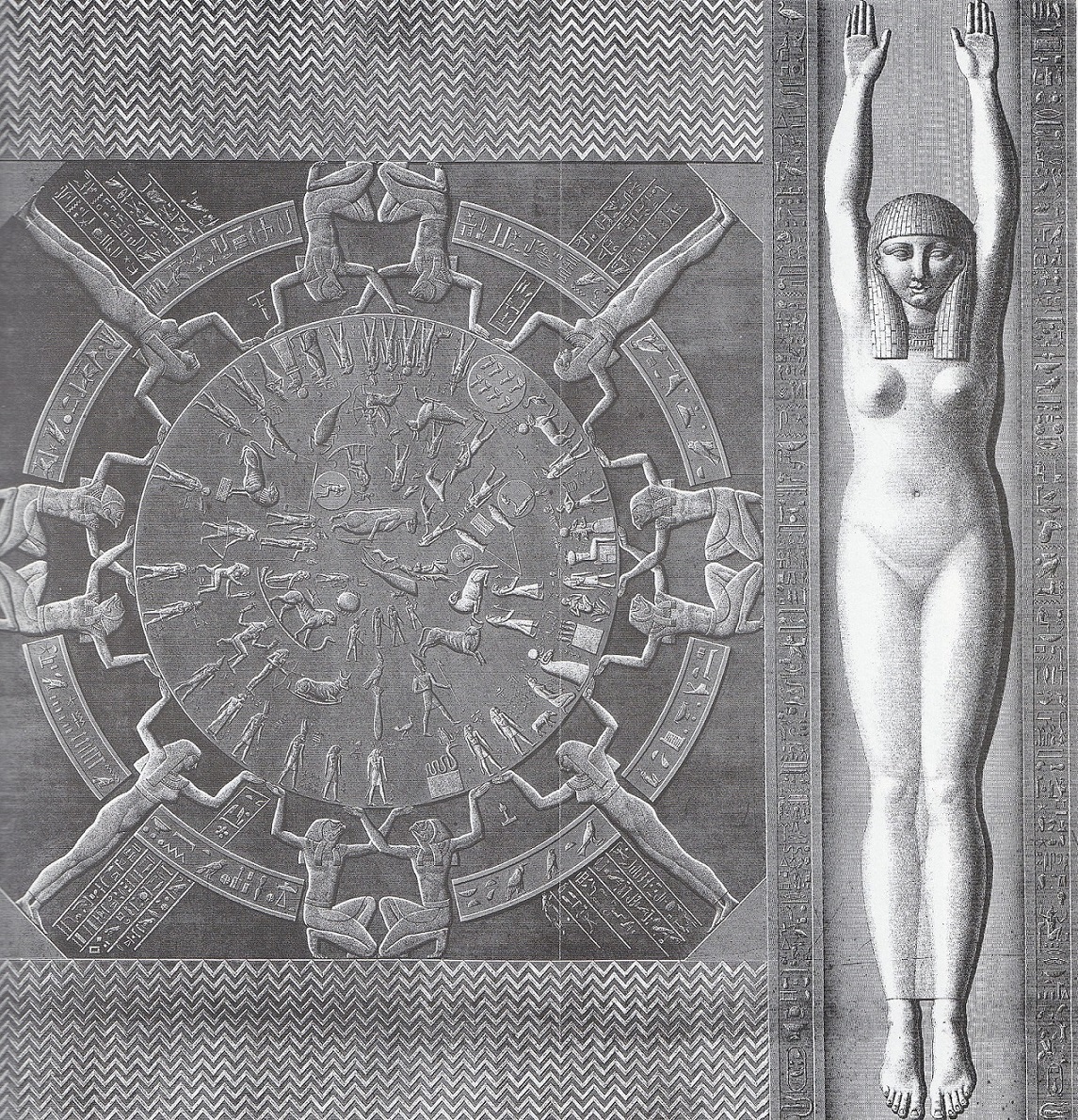
There are more things in heaven and earth, Horatio,
Than are dreamt of in your philosophy.
– Hamlet (1.5.167-8), Hamlet to Horatio
We are all marionettes recapitulating the same circular motions within linear, co-created narratives across expanses of time. On the rare occasion we peer upwards and become aware of the prehensile forces to which we are attached with strings, the pressurized gravity of the past, and rarer still do we mobilize internal resources and twitch so that a specific self-action can thwart an imminent interaction from commencing or being carried to completion. Contingent on timing, this minor amendment to the theatrical act may have far-reaching consequences for the scene, the crescendos and diminuendos within particular scenes and acts, and sometimes the entire play and the nature of its closure. Even though we can’t quite fully comprehend who or what might be pulling the strings, the partial simulation of the world theatre we experience is lucid and detailed enough to incriminate the existence of something manifesting and expressing itself in innumerable ways.
Horatio may be right in saying things in heaven and earth would probably outshine any philosophy, but in hindsight not all philosophies are equal; some may have better grasp and insight on the heavenly, spiritual, and unseen than others. To arrive there its mentally nimble parent must experience something radical and different from the conventional, accepted, and ordinary. I believe thinkers of the intellectual caliber of Emanuel Swedenborg, Carl Gustav Jung, and Wilson Van Dusen did just that, unearthing, traversing and attempting to map a vast, complex landscape which was once the exclusive dominion of the mystic and the seer. Each of these thinkers explored the symbolic nature of our inner guidance system in ways that reflected their epistemological orientations, biases, and practical concerns. In the final analysis all acknowledged the existence of the One. In this paper I will articulate aspects of their clinical and non-clinical observations pertaining to the experience of symbolic manifestations, describe what the latter might mean for the human condition, and illuminate the powerful connection between the world of images and ethical sensibility as a judgement-independent truth. Without entering and studying the worlds of these intellectual giants I would never have recognized the true majesty of the cosmos nor made the vital connections able to reconcile my heart, what I want to be true; my head, what I know to be true; and my hand, what I should do in the world and how, respectively.
Swedenborg was an ingenious eighteenth century polymath with an estimated IQ of over 150 that most know little about. His sublime view of creation was based on a system of correspondences in which everything that has come, is, or shall come into existence was a direct representation of the primordial power, the Empyrean, the numinous One; the same One ascribed names and anthropomorphic guises (i.e. God) by those with a limited and superficial understanding of its intrinsic nature (Swedenborg, 1870). Swedenborg used hypnagogic state of consciousness as an entry point into a parallel reality he himself identified as the spirit world. Exhaustive extracurricular exploration and observation of this realm was the impetus for the development of unorthodox ideas about the One, orders of existence, and the interrelatedness of all things. Of interest to the reader is the notion that variations of these ideas have cropped up, over and over, in the esoteric treatises of both modern and ancient peoples. In my own language they are transcultural products of psychological novelty but not historical novelty.
That which is numinous and sapient, manifesting and expresses itself in innumerable forms, is, according to Swedenborg, the inexorable One (Swedenborg, 1870). All orders of existence, from the spiritual and mental to the molecular and subatomic, represent a stepping down or lapsing of the One into symbolic and literal representations to form increasingly limited orders of existence. Arranged into tiers, much like the wrungs of a ladder, the orders themselves express the numinosity and nature of the One through limitation and concurrently depend on it for their continued subsistence.
Equivalent to the One is celestial heaven. Directly below it is the spiritual heaven, experienced on the physical plane as the unconditional love one being may feel toward another. Natural heaven, a tier below that and lesser representation, completes the heavenly spheres. Angels inhabited the lowest levels of the heavens. A step below this is a debased paraphysical world comprised of disembodied spirits engaged in eternal acts of self-discovery. According to Swedenborg the spiritual world, the realm of disembodied spirits, occasionally interacts with nonphysical (thoughts, feelings, etc.) and physical aspects (body, movement, etc.) of the human mind in an unconscious manner. For Swedenborg spiritual images of things greater than themselves, symbols, manifested in natural ones and our perception of the phenomenon was sound proof that we straddle the orders of existence (Swedenborg, 1870). Humans, he said, are themselves fallen angels, spirits trapped in physical bodies; bridging the mental within and the material without they are also exemplars par excellence of the laws of correspondence. Consequently when a powerful symbol appeared in human consciousness it was revelatory, emanated from the Only and Self-subsistent.
Only the father of analytical psychology, Carl Jung, can rival Emanuel Swedenborg in arresting the symbolic manifestations and representational processes of the nonphysical aspect of the human mind. While working at the Burghölzli psychiatric hospital in Zurich, Switzerland, Jung encountered a schizophrenic patient whose hallucinated world birthed animate images of a sun with a prehensile phallus. According to the patient, the four winds were generated at the behest of phallic motion (Ellenberger, 1970). After comparing the hallucinated content to descriptions of a Mithraic liturgy found in an unpublicized Greek papyrus where a phallic tube suspended from the bottom of the solar nimbus embodied the aerial forces, Jung concluded that both must have sprung from a common source, a shared mind if you like. This he named the collective unconscious and situated within a tripartite division of the human psyche as its deepest level, an ontological stratum encompassing universal, archetypal, and primordial forms which predetermine consciousness. Representing the sum of our ancestral life, the primordial images (i.e. mother, father, hero, God, etc.) and instincts (hunger, sexuality) are pre-formed in neural substrates and exist as pathways of conscious expression (Jung, 1928). Moreover the fact that mythical symbols, the language of the collective unconscious, were particularly abundant in altered states spurred Jung to make further ontological elaborations, claims that it’s “not a person, but something like an unceasing stream or perhaps ocean of images and figures which drift into consciousness in our dreams or in abnormal states of mind (Tacey, 2012, p 55).”
Jung’s detractors mistakenly believe that rendering illegitimate the historical and much revered case of a “Solar Phallus Man” would completely undermine and abolish the theory of a collective unconscious. But I beg to differ. Indeed, images of a transpersonal nature do seem to infiltrate conscious awareness in dreams and in psychotic states, both of which may be variants of the same brain-mind state (Hobson, 1994). One such image that continually crops up in alchemical manuscripts and is mentioned by Jung as a potent catalyst of transformation is the sol niger, the black sun (Jung, 1955/2014). Several years ago I had a very vivid dream featuring just that image;
the sun looked more like a black hole with spokes spinning across the sky rather than the golden disc we’re all familiar with. Seconds after witnessing it radioactive dust, rocks, and ash begin raining down around me like black pellets. I remember covering my head and bolting back into my house. Before long a demonic force had materialized within, spurring a psychotic episode where I lost all control of my bodily functions and started to engage in outrageous behaviors. In the midst of all the craziness my friend Sara appears and we have the following conversation:
“I need help. There’s something inside me.”
She looks straight into my eyes pensively. “Oh, I can see what it is.”
“Get it out of me.”
“I can’t.”
“Why not?”
“I’m not allowed to bend the laws,” she says. “There’s absolutely nothing I can do about it Paul.”
I’m flabbergasted by her icy detachment. “Am I supposed to live like this forever?”
“Yes it’s necessary that you endure it,” she says. “That’s how you’ll produce gems and diamonds.”
“What gems and diamonds? You’re not making any sense.”
“Think about it for a second,” she says. “You know exactly what they are.”
“But I don’t want gems and diamonds,” I argue. “I just want things to be as they were before. I’m really losing my grip on reality. How can anybody live with a chronic condition like this? It’s impossible.”
“Why?”
“I don’t know what’s real anymore. I can’t differentiate fantasy from what’s real.”
“Don’t fight it Paul,” she says. “It’s a mistake to fight it. It was meant to happen so embrace it. You’ll be glad you did!”
“I’m crazy.”
“A privileged condition,” she says, smiling. “Very privileged.”
A few days after having this dream I came up with a fairly novel idea for a work of fiction. By the same token a very close relative of mine prone to acute psychotic outbreaks once described a “second” sun in the sky (which he called a black sun) in the shape of a white dove. In this hallucinatory experience the magnificent bird had proceeded to beat its wings furiously, illuminating a viscous, clear fluid within individuals who happened to be in close proximity. The voice told him that the liquid was the vital life force that animated all human beings, a truth which would be remembered again in time. What was so uncanny about this experience was that he was describing old philosophical concepts–the alchemical nigredo, the Gnostic Sophia, and the mesmeric fluid of Franz Anton Mesmer (1734–1815)–of which, to the best of my knowledge, he’d had no prior acquaintance with.
Then there’s Wilson Van Dusen’s clinical findings which seem to further strengthen the case for archetypes and the collective unconscious. Working with the mentally ill at Mendocino State Hospital in California for some seventeen years, Van Dusen conducted a comprehensive investigation into the nature of his patients’ hallucinations (Van Dusen, 1970). In his clinical appraisal, Van Dusen stated that about 20% of psychotic experiences contained higher-order content, whilst about 80% contained lower-order content. The first he defined as sensory experiences that were highly feeling-related, nonverbal, and symbolic; more often than not he found that experiences of this type possessed intellectual, instructive, and creative merit, far surpassing the understanding and IQ level of the patient through which they’d manifested. These hallucinations expressed the utmost respect for personal conscience and conation and usually broadened the patient’s values. One patient, for instance, described a benevolent sun which would come at night and offer reprieve from his malevolent voices. On one occasion it transformed into a powerful image of Christ and beckoned him to partake of specific experiences likely to be enlightening and therapeutic.
One of the most awe-inspiring higher-order visions in the clinical literature was described in The Natural Depth in Man (1972). The hallucination in question took the form of a supernal lady with a mental and aesthetic dexterity to rival the mythical Muses, Sirens, and water nymphs. Going by the mysterious epithet of, “An Emanation of the Feminine Aspect of the Divine,” this spirited Lilliputian entered the conscious awareness of an elementary educated gas pipefitter with the sole intent of lifting him from his depressive and delusional slumber.
Communicating through the gas pipefitter, who had no understanding of mythical, religious, and historical contexts, Van Dusen stresses that his multiple dealings with the beautiful lady went far in convincing him that she was, without any reasonable doubt, a master of hermeneutics; she frequently produced cosmic images, letters, and universal symbols from within herself and described the implications of archetypal myths that were unknown to the clinical psychologist.
On one occasion she orchestrated a Buddhist mandala wheel by intricately knotting together human bodies and then allowing them to roll across the office; on another she accurately reflected an inner mental state that would have been concealed from any other mortal observer with the image of a flaccid phallus; and on another still she demonstrated her extrasensory powers by stipulating in a straightforward fashion that a bypass valve and differential pressure was behind unusual variances in the temperature of water coming from the same drinking fountain.
She mimicked her planetary constituent, the rocky and crater-filled moon, when it came to answering queries—thoughtful questions were accurately mirrored by answers with philosophical latitudes while the lighter breed would be reflected by playful and mischievous answers. Compared with the majority of the populace, she was a beacon of eternal wisdom.
According to Van Dusen there was simply no way that an individual of the gas pipefitter’s level of intelligence, understanding, and cognitive capacity could ever engender or conjure such a “hallucination,” not unless some external agency was involved. Lately quantum theorists have proposed “Weak Quantum Theory” or entanglement in a collective unconscious to account for extra-sensory perception in cases of the aforementioned type (Heath, 2011) however the model sheds little light, if any at all, on the underlying mechanisms of action and the phenomenally phenomenal content. My own guess is that global patterns of neuronal activation underpinning dreaming consciousness and psychotic states induce variances in the threshold of sensory gating, sometimes thrusting the dreamer or psychotic patient into realities beyond and inside this one. It appears degeneration into internal disorder, disorganization, and chaos makes it easier to perceive rudimentary units of experience that are latent when the attentional mechanisms of the prefrontal cortex are firing on all cylinders (top-down inhibition).
At any rate we don’t need to recourse to any particular ontological-epistemological framework (i.e. animistic and presupposing the existence of spirits, reductionist and presupposing the existence of an ‘unconscious’, etc.) to see the greater picture being illuminated by the rudimentary aspects of human cognition that become salient under certain neurobiological conditions. Deeply perusing and pondering the phenomenal aspects is sometimes enough.
In highly dissociated states we often experience aspects of self as foreign and other. Appearing suddenly and without warning, the ‘voices’ of men, women, and children may interject into out private mental worlds and provide running commentaries on our lives (McCarthy-Jones, 2012). At times they will undermine, ridicule, admonish, threaten, and beleaguer us and in extreme cases yearn for our complete dissolution and destruction (McCarthy-Jones, 2012). Encroaching upon private territory they will steal memories and thoughts out from under our unassuming noses and use them for emotional blackmail. Determined to break us they will incite physical pain or repeat short phrases over and over like a broken record without the slightest inkling of shame or mercy (Van Dusen. 1972). Occasionally they will possess and speak through us or take control of our tongues arms, eyes, ears, or genitals. (Van Dusen, 1972) Insofar as they tempt us to surrender to carnal impulse they resemble Freud’s Id. As one they illuminate our weaknesses and faults.
In sharp contrast a small proportion of these experiences are rich, complex, numinous, trans-personal, and therapeutic, occasioning the cultivation of ethical sensibility and hence the enlargement of personal values. These are mostly visual; they communicate telepathically with the individual via direct appeal to the primordial emotions and feelings; they demonstrate deference towards the individual’s own self-determination; and their appearance if often accompanied by a tangible nonphysical ring of spiritual truth (Van Dusen, 1972). Unlike the lower-order ‘voices’ which lie about their powers the higher-order hallucinations are bizarrely gifted, exhibit extrasensory perception, and are genuinely reassuring.
Their method of communication, their language, is implicit, soteriological, wise, and multilayered, consisting of innumerable symbols that must derive from a transcendent world of Forms in which the vital quality of each object or entity cannot be understood if disconnected and removed from the interrelated and interconnected whole. Each symbol is dynamic, mutable, and contains multiple inner meanings. Each of these implications appropriates elements of the outer physical world to connote inner nonphysical qualities. Anchored within the confines of this internal system of representation the sun is not just physical light but truth, logic, life, spirit, the masculine, conquest, justice, royalty, stability, and indestructibility. It’s phenomenal opposite, the moon, may connote memory, birth, the feminine, intuition, dream, romance, emotion, reflection, and wistful longing. Each symbol may have positive or negative connotations; the sun can be construed in the context of a leader or an oppressor and the moon can be a nurturer or an extirpator of life. All qualitative implications are true but one is always more true in the context of an individual’s character and their experience of the world. Insofar as higher experiences are symbolic they resemble Jung’s psychological archetypes. As one they illuminate our aptitude for personal choice and conation.
Of course an efficiently operative mind underpropped by the global activation patterns of a healthy brain would experience these elementary processes as self, albeit in a much more mellow fashion. It is one’s self, or so we’re led to believe, which can generate random lascivious and perverted thoughts about other people. The same self feels guilty and embarrassed for having ceded awareness to them, and so tries to repress them indefinitely. Most of the times this active repression doesn’t work and they bounce back with a greater vengeance and plan to overwhelm the self. In contrast the much more inspirational higher-order visual content manifesting in dreams and psychosis may take the guise of feeling ignominy and shame for having had a nefarious thought about someone, a “eureka” moment of psychological novelty where an individual comes up with an interesting idea for a work of fiction, or an “intuit” to exonerate and extend empathy to one’s adversaries for their perceived transgressions. Studying hallucinations in unmedicated patients and responses to creative tasks in healthy controls Whitton et al. (1978) found that 4 seconds prior to the onset of both experiential classes spectral EEG power was prominent in the delta and theta bands. Parallels gleaned between psychotic intrusions and the intuit of solving a creative task on the neurophysiological level support the contention that disembodied spirits and unconscious contents are simply two ways of construing the same raw underpinnings of inner processes.
If intentional movements associated with thoughts, feelings, desires, urges, and inspirations are initiated in the “unconscious” and stream into conscious awareness from obscure origins, and if their transduction into real world events can be consciously vetoed 200-150ms before that intentional act reaches completion (Libet, 2005), then perhaps the esteemed self so revered by history and philosophy through the ages is nothing but the execution of free will. Perhaps self is nothing greater, nothing less, than an illusory battle in which making choices is the only truth, the only meaning, the only salvation.
Illuminated strongly by the aforementioned discourse is that hallucinating psychotic or not, our rich subjective experiences are replete with powerful images and symbols, offering an internal guidance system which speaks vociferously to the day-to-day practice of leading a moral, ethical life. Indeed seers, mystics, and esoteric philosophers like Emanuel Swedenborg, in fact the majority of individuals with some kind of psychic opening, are indistinguishable from one another in terms of nonjudgmental character and peak playfulness, aptitude in effortlessly transcending sociocultural frontiers and relinquishing ego-self and rational-self, trust in the process, and openness to experience. Modesty, it seems, must be cultivated before spiritual gifts can be handed down to you.
Moreover it appears these people participate in reality through a hermeneutics of the heart and the implicit qualities themselves, as Tarnas (1998) pointed out in his evocatively illustrated thought experiment, are like vibrant sunlight, heartening the ensouled universe to unveil its deepest mysteries. If we, as intelligent ‘suitors’, can establish a consensus about which moral path precipitates participation in self-disclosure of the cosmos’s being, then shouldn’t it also hold that ethics, a higher principle guiding how we should act, respond, and relate to one another, is probably more of a judgement-independent truth like mathematics, logic, and scientific intelligibility rather than a human construction per se?
Ethics, in effect, could be an aspect of the objective timeless domain governing micro- and macroscale development via teleological laws over time. Embraced in such a transcendent way, this form of self-understanding imbues cross-cultural philanthropic practices involving selfless sacrifice and service (i.e. “being of service to our fellow human beings” or “giving freely of your own self to others”) with deepest meaning as to reflect something greater than personal choice or making the correct choice, for that matter. And, in retrospect what could truly be greater than a harmonious alignment with the ethically-governed psychophysical principles of nature? For me, Swedenborg’s esoteric worldview, Jung’s theories of the collective unconscious and psychological archetypes, and Van Dusen’s findings have all been catalysts for this phenomenal revelation.
References
Ellenberger, H. F. (1970). The history of the unconscious: The history and evolution of dynamic psychiatry. New York, NY: Basic Books.
Heath, P.R. (2011). Mind-matter interaction: A review of historical reports, theory and research. McFarland.
Hobson, J. A. (1994). The chemistry of conscious states. Back Bay Books.
Jung, C. G. (1963). Memories, dreams, reflections. New York, NY: Pantheon Books.
Jung, C. G. (1933). Modern man in search of a soul. New York, NY: Harcourt, Brace, & World.
Jung, C. G. (1927). The structure of the psyche. Collected works, 8, 139-158.
Jung, C. G. (2014). On hysterical misreading (R. F. C. Hull, Trans.). In H. Read et al. (Eds.), The collected works of C. G. Jung: Complete digital edition (Vol. 1, pp. 89-92). Retrieved from http://www.ebscohost.com (Original work published 1904)
Libet, B. W. (2005). Mind time: the temporal factor in consciousness. Cambridge, MA: Harvard University Press.
McCarthy-Jones, S. (2012). Hearing voices: The histories, causes and meanings of auditory verbal hallucinations. Cambridge University Press.
Noll, R. (1997). The Aryan Christ: The secret life of Carl Jung. New York, NY: Random House.
Swedenborg, E. (1870). Arcana Coelestia: The heavenly arcana contained in the Holy Scriptures or Word of the Lord unfolded beginning with the Book of Genesis together with wonderful things seen in the world of spirits and in the heaven of angels. Translated from the Latin.. (Vol. 9). American Swedenborg printing and publishing society.
Tacey, D. (2012). The Jung reader. New York, NY: Routledge.
Tarnas, R. (1998). The great initiation. Noetic Sciences Review, 47, 24-31, 57-59.
Van Dusen, W. (1970). Hallucinations as a world of spirits. Psychedelic Review, 11, 60-9.
Van Dusen, W. (1981). The natural depth in man. Swedenborg Foundation Publishers.
Van Dusen, W. (2004). The presence of other worlds: The psychological/spiritual findings of Emanuel Swedenborg. West Chester, PA: Chrysalis Books.
Whitton, J. L., Moldofsky, H., & Lue, F. (1978). EEG frequency patterns associated with hallucinations in schizophrenia and” creativity” in normals. Biological psychiatry, 13, 123-133.









